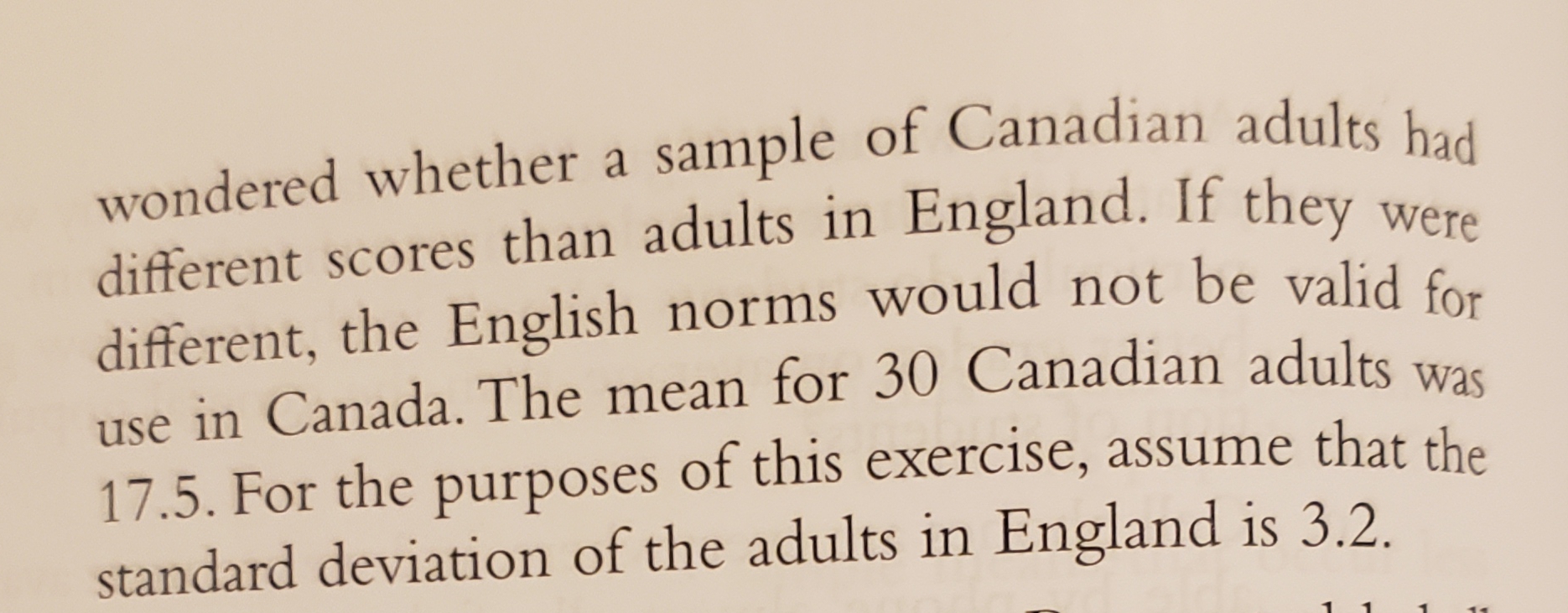Please help me answer this question. I am In my last college semester, and this course is definitely a hard one. ALSO, please be very specific with your answer. THANK YOU SO MUCH.
7.48 The Graded Naming Test and sociocultural differences: Researchers often use z tests to compare their samples to known population norms. The Graded Naming Test (GNT) asks respondents to name objects in a set of 30 black-and-white drawings. The test, often used to detect brain damage, starts with easy words like kangaroo and gets progressively more difficult, end- ing with words like sextant. The GNT population norm for adults in England is 20.4. Roberts (2003)wondered whether a sample of Canadian adults had different scores than adults in England. If they were different, the English norms would not be valid for use in Canada. The mean for 30 Canadian adults was 17.5. For the purposes of this exercise, assume that the standard deviation of the adults in England is 3.2.stalldar a. Conduct all six steps of a z test. Be sure to label all six steps. b. Some words on the GNT are more commonly used in England. For example, a mitre, the headpiece worn by bishops, is worn by the archbishop of Can- terbury in public ceremonies in England. No Cana- dian participant correctly responded to this item, whereas 55% of English adults correctly responded. Explain why we should be cautious about applying norms to people different from those on whom the test was normed.c. When we conduct a one-tailed test instead of a two-tailed test, there are small changes in steps 2 and 4 of hypothesis testing. (Note: For this example, assume that those from populations other than the one on which it was normed will score lower, on average. That is, hypothesize that the Canadians will have a lower mean.) Conduct steps 2, 4, and 6 of hypothesis testing for a one-tailed test. d. Under which circumstance-a one-tailed or a two- tailed test-is it easier to reject the null hypothesis? Explain.e. If it becomes easier to reject the null hypothesis under one type of test (one-tailed versus two- tailed), does this mean that there is a bigger differ- ence between the groups with a one-tailed test than with a two-tailed test? Explain. f. When we change the p level that we use as a cut- off, there is a small change in step 4 of hypothesis testing. Although 0.05 is the most commonly used p level, other values, such as 0.01, are often used. For this example, conduct steps 4 and 6 of hypoth- esis testing for a two-tailed test and p level of 0.01, determining the cutoff and drawing the curve. g. With which p level-0.05 or 0.01-is it easiest to reject the null hypothesis? Explain. h. If it is easier to reject the null hypothesis with cer- tain p levels, does this mean that there is a bigger difference between the samples with one p level versus the other p level? Explain











